

Björn PÅLSSON is an Associate Professor in Railway Mechanics at the Chalmers University of Technology in Göteborg, Sweden. Björn's main research interests are modeling and simulation of dynamic vehicle-track interaction and ensuing track degradation, focusing on switches and crossings (S&C, turnouts). Björn holds an MSc in mechanical engineering from Chalmers University and completed his Ph.D. thesis "Optimisation of Railway Switches and Crossings" in 2014.
Modeling and Simulation of Dynamic Interaction between a Rail Vehicle and a Railway Turnout Assembly using Simpack’s Linear and Non-linear Flextrack Modules
This presentation will provide examples of the modeling and simulation of dynamic vehicle-track interaction in railway switches and crossings (S&C, turnouts) using Simpack's linear and non-linear flex track modules.
In this presentation the
- modeling steps taken to implement the S&C models will be presented
- suitability of the different flex track modules for various analysis applications will be discussed
- modeling of flex track will be compared to the use of standard co-running track models
- simulation results will be compared to measured wheel-rail contact forces and track responses in S&C
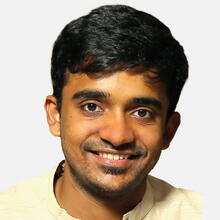

Govind has a bachelor’s degree in Mechanical Engineering and a Master’s degree in Computational Mechanics from RWTH Aachen University, Germany. He started working for Dassault Systèmes SIMULIA in 2015 as a back-end support engineer for Simpack. He currently holds the role of Portfolio Management specialist responsible for Simpack Rail and NVH modules.
His core domain expertise includes multibody systems simulation, rail vehicle dynamics, flexible body modeling and simulation. Govind has worked closely for multiple years with leading rail vehicle manufacturers, operators, and suppliers to help them design safe and sustainable transportation systems using solutions of Dassault Systèmes SIMULIA.
R&D Update — Rail Vehicle Dynamics
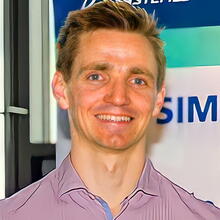
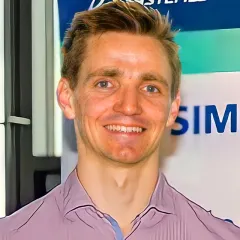
James CLARKE studied Mechanical Engineering and Commerce at the University of Western Australia. After graduating, James undertook a one-year internship at Siemens Mobility in Graz, Austria, primarily working with Simpack Rail.
In 2016, James joined Dassault Systèmes and was responsible for the development of Simpack training courses. Since 2018 he has worked in the Simpack Multibody Simulation Project and Support team. In this role, he had worked on Simpack rail, automotive & engine projects, and more recently, on the new Multi-Body-Simulation App on the 3DExperience platform.
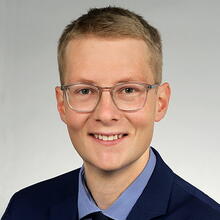

Jonas VUITTON is a Research Assistant at the Chair of Rail Vehicles at the Technical University Berlin. His main research topics are on the dynamics of rail vehicles, especially using numerical simulation, and the digitization of the maintenance of rail freight operations, implementing data-based maintenance strategies. Jonas’s research focuses on the rail freight system at the interface between vehicles and operations.
Modeling and application of a Y25 freight bogie in MBS
Freight wagons are generally regarded as the most simply constructed rail vehicles in terms of running technology. Although they usually have one spring stage only and the damping is ensured by friction elements, the modeling of freight wagons in MBS is rather complex. The parameters of the running gear depend on the maintenance status and the construction tolerances of individual vehicles and are difficult to determine. The modularly structured model of the Chair of Rail Vehicles of TU Berlin allows investigations of the dynamic behavior of four-axle freight wagons with the most common European bogie Y25. This model has been used in several projects and continuously improved in terms of accuracy and computing performance. It is integrated into an in-house MATLAB-based framework allowing multi-dimensional parameter variations. Exemplarily, a use case for the detection of rail obstacle roll-over incidents is presented. The model is used for the preliminary investigation of the derailment safety during the measurement campaign and the relevance of simulations for rail obstacle roll-over incidents is evaluated.
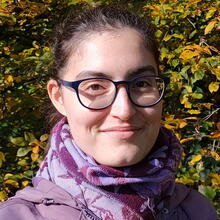

Justine LARIVIÈRE works as a Post-doctoral Engineer at the Department of Applied Mechanics in FEMTO-ST Institute in Besançon, France. In 2020, Justine graduated from the University of Franche-Comte with a doctorate in Mechanical Engineering funded by ALSTOM. Her main research field focuses on robust design with virtual prototyping tools, including sensitivity analysis, surrogate modeling, and design under uncertainties.
Robust Tolerancing of Railway Vehicles with Simpack Multi-Body Models to Ensure Dynamic Performance and Standard Compliance
A significant challenge for railway bogie design is to take into account uncertainties in operating conditions, suspension component manufacturing processes, and wear. Indeed, designers are faced with trade-offs between competing candidate solutions with antagonistic objectives and multiple design constraints. Virtual prototyping has become an essential decision support and certification tool for railway applications by leveraging multi-body models simulating nonlinear vehicle dynamics. However, this approach relies heavily on a large number of simulation runs, and strategies are required to reduce the computational burden. A robust tolerancing methodology specifically adapted to the multimodal design spaces found in bogie design and providing greater visibility for the trade-offs encountered in competing candidate designs is presented. The proposed robust tolerancing methodology is illustrated on a realworld railway application: an Alstom locomotive modeled with Simpack.
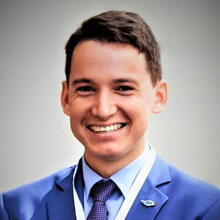

M.Sc. Kamil SAZGETDINOV is currently a Junior Researcher at the Virtual Vehicle Research GmbH within the Department Rail and doctoral student at the Graz University of Technology in Graz, Austria. Kamil’s main research areas include vehicle-track interaction, multibody dynamics, and track damage modeling for the railway turnouts application.
Simpack Multibody-Dynamics Model-Based Methodology for the Holistic Track Damage Evolution Prediction in Railway Turnouts
Railway turnouts feature discontinuities in wheel-rail contact geometry and track stiffness, which results in large dynamic wheel-rail contact forces, leading to a degradation of the rail surfaces and track irregularities over time. Analysis of the literature shows that researchers focus primarily on one damage mechanism at the time. However, the interplay and interconnection between different track damage patterns have not yet been addressed to the same extent.
This presentation aims to demonstrate a novel developed methodology based on the Simpack multibody-dynamics model. Thus, showing how the model can calculate holistic predictions for accumulated track damage in railway turnouts, account for the interplay and interaction between different damage patterns, e.g., such as the development of track irregularities due to ballast and subsoil settlement, and rail profile changes due to plastic deformation and wear.


Max SCHISCHKOFF works as a Research Assistant at the Chair of Rail Vehicles at the Technical University Berlin. His main topics of research are the dynamics of rail vehicles using numerical simulations and the Digital Automatic Coupler (DAC) in rail freight transport. Max’s research focuses on the rail freight system at the interface between vehicles and operations.
Modeling and application of a Y25 freight bogie in MBS
Freight wagons are generally regarded as the most simply constructed rail vehicles in terms of running technology. Although they usually have one spring stage only and the damping is ensured by friction elements, the modeling of freight wagons in MBS is rather complex. The parameters of the running gear depend on the maintenance status and the construction tolerances of individual vehicles and are difficult to determine. The modularly structured model of the Chair of Rail Vehicles of TU Berlin allows investigations of the dynamic behavior of four-axle freight wagons with the most common European bogie Y25. This model has been used in several projects and continuously improved in terms of accuracy and computing performance. It is integrated into an in-house MATLAB-based framework allowing multi-dimensional parameter variations. Exemplarily, a use case for the detection of rail obstacle roll-over incidents is presented. The model is used for the preliminary investigation of the derailment safety during the measurement campaign and the relevance of simulations for rail obstacle roll-over incidents is evaluated.


Biography:
Stefan DIETZ’s mission is to explore and make available new multi-scale physics for structures and motion simulation, to maintain and expand existing technology. Stefan leads the team flex body analysis, which contributes to the Abaqus and the Simpack solver.
Before the acquisition of Simpack AG by Dassault Systèmes Stefan was responsible for product management, customer support, and training for flexible bodies in the multibody system code Simpack. Stefan received a Ph.D. in 1999 in aerospace engineering.
Title: Structural Models for Wind Turbine Design
Abstract:
In contrast to high-resolution finite element methods, a strength of multibody system models is the description of the complex mechanical systems with a comparatively small number of degrees of freedom, which leads to a low computational effort. This is necessary for the analyses of multiple design variants. Different levels of modelling fidelity enable the optimum balance between computation time and depth of results to be achieved. Beam models are the obvious choice for modeling the flexibility of rotor blades in early design phases. The presentation covers the recent enhancements of composite beam models in Simpack and Abaqus. For a wide range of components where the assumption of small deformation and a linearized material law is sufficient, the modeling workflow starts with the generation of a reduced finite element model. A number of such models can now be assembled into a single linear flexible body, which improves the handling, and reduces computation effort, of a modular database. The presentation will also cover the preparation of linear flexible bodies in the structures apps of the 3DEXPERIENCE platform.
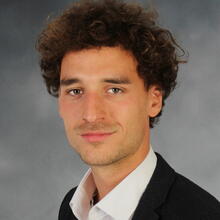

Due to his high interest in scientific subjects, Steffen Brück decided to study mechanical engineering at the University of Applied Sciences in Bielefeld. After completing his bachelor's degree, Steffen chose to continue with a master's degree program in mechanical engineering to deepen further his knowledge in the field of computer-aided design and simulation.
During his master's studies, Steffen followed modules like FEM and MBS with particular interest. Because the practical work with Simpack and Ansys was of specific interest to him, Steffen decided to focus on this topic in his final thesis. Steffen wrote the thesis of his master studies at DB Fernverkehr AG in cooperation with SBB and DB Systemtechnik.
After completing his master's degree, Steffen took up a position in the calculation department of DB Systemtechnik, where his tasks include strength calculation using FEM and the calculation of vehicle dynamic processes using MBS.
Simulation and Validation of the ICE 4 MBS Model during Switch Passage
In tests for approvals of railroad vehicles, the most significant forces usually are expected to show in the narrow deflection radii of switches. Measurements show a dynamic behavior of the forces, especially in the area of the movable switch tongue. Conventional simulation methods with rigid switch profiles cannot reproduce these dynamic effects.
As part of my master thesis, procedures needed to be developed to integrate the elastic behavior of the area of the switch tongue into an MBS model. Next, the dynamic effects of a moving switch tongue were observed in measurements and reproduced in simulation processes. To present the measured dynamic impact in simulation models, it was necessary to consider the elasticity of the switch-blade. Considering the elasticity, the switch-blade had to be created as a CAD model so that the elastic properties could be calculated in an FE model. Then component properties of the FE model were then transferred to the multibody simulation model via a reduced substructure.
In this presentation of my master thesis, I will show that the dynamic effects from measurements during a switch passage can be represented in an MBS model by considering the elastic properties of the switch tongue.


Yuan YAO received his doctorate (PhD) in Mechanical Engineering in 2010 from the Southwest Jiaotong University and began to work in the same year at the State Key Laboratory of Traction Power (TPL), a state key open research laboratory based on Southwest Jiaotong University. He received his Professor title in 2018. Yuan specializes in the dynamics simulation and analysis of railway vehicles.
Yuan has completed more than 50 projects sponsored by the Foundation and Railway Industry and has published more than 60 papers indexed by SCI or EI.
Yuan’s primary research interests lay in bogie design theory, hunting stability, vibration control, and new technology of suspension systems. In addition, Yuan has done several pieces of research on coupler stability in heavy haul trains and the driving system dynamics of locomotives.
The TPL research group has an excellent reputation within the Chinese railway industry for outstanding research and industry support in the core area of railway vehicle dynamics design and field testing. Over the past decade, they played a vital role in China in almost all types of new locomotive bogie designs and analysis.
Lateral Stability Design of Railway Vehicles based on Simpack Multi-Objective Optimization
During the long-term service, the lateral hunting stability of railway vehicles will be inadequate due to wheel-rail wear and variations in contact states, which could lead to phenomena such as low-frequency swaying, vibration acceleration alarm, and high-frequency shaking. In order to take into account the wide wheel-rail contact state, the suspension parameters matching of railway vehicles based on stability/comfort Pareto optimization, and the matching laws for the robust lateral stability design based on the special engineering requirements are summarized. The establishment and analysis of vehicle dynamics models are accomplished by SIMPACK code, and the optimization algorithm such as genetic algorithm NSGA-Ⅱ is adopted through MATLAB Co-simulation. The extended development of SIMPACK script languages, such as pre-processing language .sjs and post-processing language .qs is implemented for the multi-parameter and multi-objective optimization problem. Finally, several vehicle models are exemplified to illustrate the feasibility and efficiency of this method in engineering applications.


Yongming YAO graduated from Southwest Jiaotong University in June 2021 with a doctorate in engineering. At present, Yongming works for China Academy of Railway Sciences Group Co., Ltd., where he mainly engages in the research of pantograph-catenary dynamics.
Simulation Analysis of Vehicle-Pantograph-Catenary System
Based on the multi-body dynamics software SIMULIA Simpack and the finite element software ANSYS, the vehicle-pantograph-catenary coupling dynamics model is established. The dynamic characteristics of the pantograph-catenary system are analyzed.